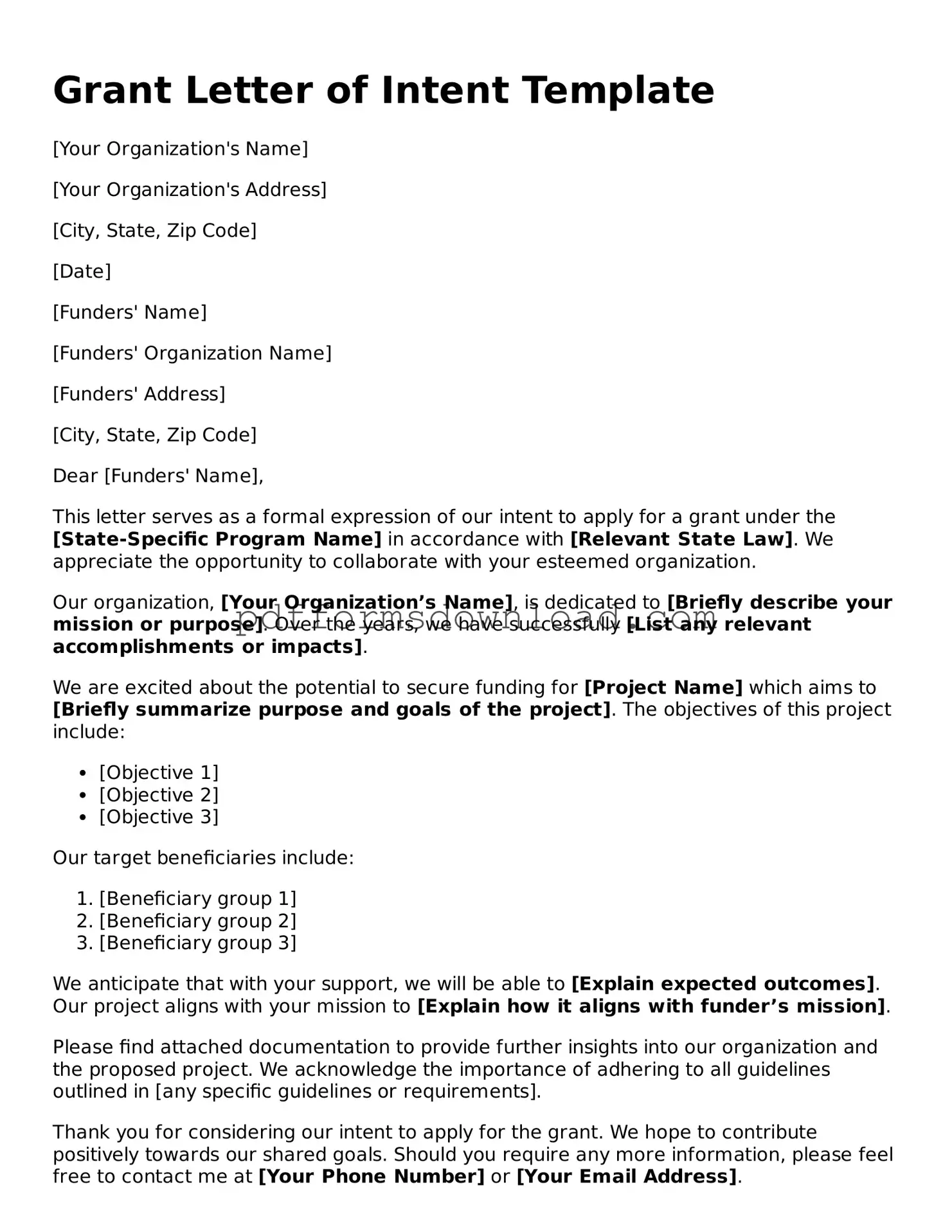What is a Grant Letter of Intent (LOI)?
A Grant Letter of Intent is a document that outlines a potential applicant's intent to apply for a grant. It serves as a preliminary step in the grant application process, allowing organizations to express their interest and provide a brief overview of their project or program. This letter helps grantors gauge the number of applicants and the types of projects they can expect.
Why is an LOI important?
The LOI is important because it helps both the applicant and the grantor. For applicants, it allows them to clarify their project ideas and receive feedback before submitting a full application. For grantors, it helps them manage their resources by understanding the volume and scope of proposals they will receive.
What should be included in a Grant LOI?
A well-crafted Grant LOI should include the following elements: a brief introduction of the organization, a summary of the project or program, the specific funding request amount, the intended outcomes, and any relevant qualifications or experience that support the project. Clarity and conciseness are key.
How long should the LOI be?
The length of the LOI can vary depending on the grantor's requirements. Generally, it should be one to two pages long. It is essential to follow any specific guidelines provided by the grantor regarding length and format.
Who should sign the LOI?
The LOI should be signed by an authorized representative of the organization, such as the executive director or board chair. This signature indicates that the organization is formally expressing its intent to apply for funding.
When should I submit the LOI?
LOIs should be submitted according to the timeline set by the grantor. It is crucial to pay attention to deadlines to ensure that the organization is considered for funding. Some grantors may have specific submission windows, while others may accept LOIs on a rolling basis.
Can I submit more than one LOI to the same grantor?
Submitting more than one LOI to the same grantor is typically discouraged unless the grantor explicitly allows it. If there are multiple projects, it is advisable to contact the grantor for guidance on how to proceed.
What happens after I submit the LOI?
After submission, the grantor will review the LOIs and may invite selected applicants to submit a full grant proposal. The timeline for this process can vary, so it is important to be patient and follow up if necessary.
Is there a fee to submit an LOI?
Generally, there is no fee associated with submitting a Grant Letter of Intent. However, it is always wise to check the specific requirements of the grantor to confirm their policies.
Can I revise my LOI after submission?
Once an LOI is submitted, revisions are usually not permitted. If you realize there is an error or if you want to make changes, it is best to contact the grantor directly to discuss the possibility of submitting a revised version.
